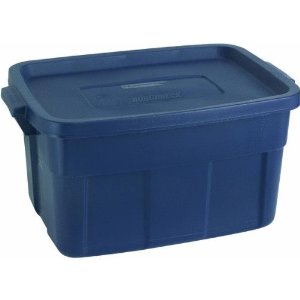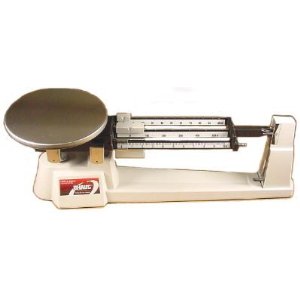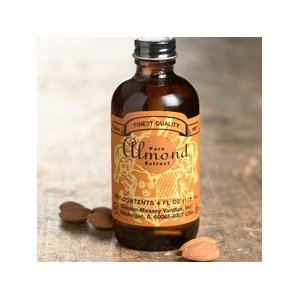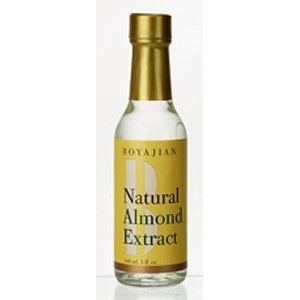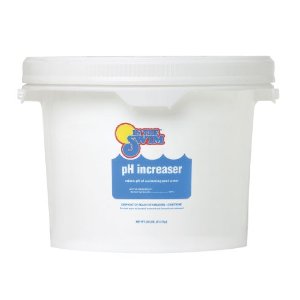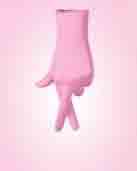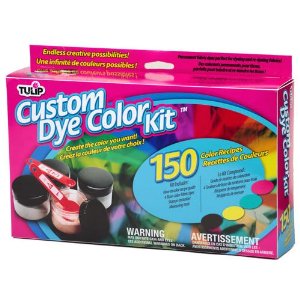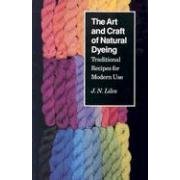« 2011 June | Main | 2011 April »
Tuesday, May 31, 2011
Is it too dangerous for children to tie-dye their own t-shirts?
Name: Debbie
Country or region: USA
Message: I was thinking of using this dye for a church VBS project. It sounds like it might be too dangerous for children to dye their own t-shirts. What do you think?
If we do this we will be dyeing about 125 t-shirts. How much dye should we purchase?
Whether it's safe for children to dye clothing depends on their level of maturity, and the amount of supervision you can provide.
Dyeing can be done safely with even very young children if there are enough adults supervising closely, but a class with only one or two adults requires that the children be old enough and well-behaved enough not to do obviously stupid things. A class of preschoolers will require one-on-one supervision throughout the dye application process, to make sure they don't drink the dye or squirt it on one another. A class of older children will normally be able to handle dye safely with only a couple of adults supervising, unless there is a problem with badly-behaved children in the class who purposefully do things that they've been told not to do.
Fiber reactive dyes, such as Procion MX dye, are not very dangerous. An occasional small spill on the hands is no big deal (unlike the situation with more dangerous types of dyes). It is important to avoid drinking the dye, eating with unwashed hands after spilling dye on them, or breathing the dye powder. (It is okay to eat with dye-stained hands if the hands have been washed very thoroughly with soap and water.)
Even if a child drinks the dye, it will not cause acute poisoning, but it's a bad idea since these dyes have not been tested for safety when eaten; many textile dyes could potentially increase the risk of cancer if one makes a habit of consuming them. Note that all-purpose dyes, such as Rit dye, are not safer than Procion MX dyes in any way. Breathing undissolved dye powder of any sort is a bad idea because it can cause allergies. If a person who is allergic to a specific type of dye continues to be exposed to it, asthma can result. The toxicity and allergenicity of these dyes is normally an issue only for employees who work in the dye industry, but we feel it is important for everyone to follow good safety practices, to prevent any such problems.
For students below high school age, I would encourage you to mix the dyes with water in advance of the class, so you don't have to worry about them breathing airborne dye powders. Anyone who is mixing up dry dye powder will need to wear a well-fitting dust mask, and be careful to avoid getting dye powder on any surfaces in the room. Procion MX dyes will last well for several days or a week, after being dissolved in water, if the water is neutral and the dye is not exposed to even a single drop of soda ash. Some tie-dye kits contain soda ash or an equivalent already mixed in with the dyes, which means that the dyes from these kits must be mixed with water only immediately before use, before they go bad, which happens in about an hour. The kits I prefer include soda ash that is to be used as a separate pre-soak, so that there is no problem with mixing the dyes a day or two in advance.
I recommend that the children tie their shirts while they are still dry, or dampened only with water, instead of after the soda ash presoak. Soda ash is very drying and irritating to the skin, and should not be used without gloves, but gloves make it difficult to tie the fabric. It's fine to dampen the shirts with water for tying, and then throw them into a soda ash presoak afterwards, before dyeing with Procion dye.
You will need to buy extra-small plastic gloves for children too small to wear adults' gloves, or buy the adults' size small and give smaller children rubber bands to hold them on at the wrist. Don't let the children handle soda ash or dyes without wearing gloves, whether of the thin latex or nitrile type, or the thicker rubber gloves used for dishwashing. Search for "extra small" gloves on Amazon, or see Blick Art Materials, which sells
Hygloss Gloves for Kids on Amazon, or see Blick Art Materials, which sells
Hygloss Gloves for Kids . .
How much dye will you need for 125 shirts? See my page, "How much Procion MX dye should I use?". To dye 100 adult size large shirts, you would need a total of twelve ounces of dye (one 2-ounce jar of each of several colors). You might be able to dye twice as many children's shirts with that amount of dye, depending on the shirt size. The simplest and most economical way to do this would be to order an appropriately-sized tie-dye kit from a good dye supplier such as Dharma Trading Company or PRO Chemical and Dye [links go to their tie-dye kit pages], such as their kits designed for 100 shirts. You will find this to be much more economical than buying a number of smaller tie-dyeing kits.
Be sure to avoid the Rit Tie Dye kit, which requires boiling hot water and works very poorly compared to the kits that contain Procion dyes. Good dye suppliers, such as ProChem and Dharma, do not even sell the tie dye kits that contain all-purpose dyes, because the Procion tie dyeing kits are highly superior.
For more information about the safety of dyeing by hand, see the Dye Safety FAQ page.
Thursday, May 26, 2011
Name: Eileen
Country or region: Ireland
Message: Hi,
I have an orange bandage dress, and I want to dye it red. Is this possible? And if so, how do I do it, using your dye?
What is the fiber content of your bandage dress? Is it made of polyester, or cotton, or nylon? Does it have a metallic sparkle, or is it just regular fabric? Is it washable, or is it labeled "dry clean only"?
Thank you for getting back to me, It is 96% polyester and 4% elastane. It is machine washable. It does not have a metallic sparkle from it.
I did try to dye it with a Red dye but it did not take, I have been told I am using the wrong colour to change it to red.
No, I'm sorry, but this is an impossible fiber combination to dye. Polyester cannot be dyed without boiling it for some time, while elastane (also known as spandex) is very sensitive to heat and must never be boiled, not even briefly. The elastane will fall apart if you boil it for half an hour. Don't even try to dye this dress. Polyester/elastane blend fabric is made by dyeing the different fibers separately before they are woven or knitted together, since it is impossible to dye a polyester/elastane blend.
The reason why the dye you tried did not take is that it's not the right type of dye for polyester. Polyester cannot be dyed with any ordinary sort of dye; if a dye works on natural fibers, then it will not work at all on polyester. The only dye that works on polyester is a special type of dye called disperse dye.
For changing an orange dress to red, your color choice of red dye was correct. Red dye on an orange fabric will produce a red with an orangish tinge; the more red dye you use, the purer will be the resulting red. A pure fuchsia, which is a blueish red, would be even better for turning orange to a true red. Unfortunately, that does not matter in this case, given the problem of the fiber blend.
There is one possibility that might work, if you would be willing to have a mottled color, instead of a perfectly smooth solid color. You could use a high-quality thin fabric paint, instead of dye. (See Fabric Paints: a different way to color fibers.) If you were to apply a slightly diluted bright red fabric fabric paint, such as Dye-Na-Flow, to the entire dress, it would mostly turn the dress red, with some relatively reddish-orange mottling. Check your local crafts shops for Dye-na-Flow fabric paint; if they don't carry it, you can order a one-liter bottle from George Weil in the UK.
Wednesday, May 25, 2011
Can I use "iDye Poly" to dye cotton?
Name: Lauren
Country or region: Australia
Message: Hello, I have bought some iDye Poly, not realising it's for Polester, and I am wanting to tie dye some 100% Cotton. Can i still use the iDye Poly and add salt? I have never dyed anything before. This is my 1st attempt, so I'm not really sure what I am doing. I have read about adding salt to natural fibes. I dont live close to anywhere where I can get more dye, so will it still work? Thank you so much =)
No, you absolutely cannot use iDye Poly on natural fibers. Save it for when you have synthetic fibers to dye; don't even open the package now. iDye Poly contains a type of dye called disperse dye, so it works on polyester, acetate, acrylic, and nylon. It washes right out of cotton and other natural fibers, as well as rayon. There is no fixative that will make iDye Poly permanent on cotton. Commercial dye fixatives will not work on disperse dye.
Salt has no special magic when it comes to dyeing. While salt has important uses in dyeing, it will not act to fix dyes and make them permanent.
Since you don't live near a place that sells dye, you should buy your dyes online by mail-order. In Australia, good mail-order sources include Kraftkolour, The Thread Studio, Silksational, and Batik Oetoro. See my page, "Sources for Dyeing Supplies Around the World" for contact information and links for these and other dye suppliers; scroll down to the section on Australia & New Zealand. Some serious dyers in Australia order their dyes from suppliers in the US, either Dharma Trading Company or PRO Chemical & Dye, because their prices are lower, but this works out only if you call on the phone to request a slower and more economical form of shipping than is available when ordering through the websites. Regular fast overseas shipping costs are very expensive.
Plain iDye, sold by the same shops as iDye Poly, will work on natural fibers such as cotton, but it's not the best choice. It contains direct dye, a type of dye that tends to wash out of fabric, and bleeds badly in the laundry, though of course it's far better on cotton than iDye Poly. You will get better, much longer-lasting results on cotton if you buy a fiber reactive dye, such as Procion MX dye or Drimarene K dye. Tintex Dye Manufacturers of Australia sells a Tintex Low Temperature Dye which contains fiber reactive dye, so it is a good choice, too, unlike the Tintex Dye in North America which contains direct dye.
For tie-dyeing, you really don't want to use a direct dye, such as iDye, or an all-purpose dye, such as Rit. Both require immersing your garment in boiling hot water, and neither allows you to easily dye it more than one color. Cool water fiber reactive dyes can be squirted onto the fabric and allowed to bond to it at room temperature, using soda ash to set the dye. Most tie-dyeing kits, and all the good ones, contain fiber reactive dye such as Procion MX dye or Drimarene K dye. Good brands of tie-dyeing kits include the Dylon tie-dye kit and the Jacquard tie-dye kit; avoid the Rit tie-dye kit, if you happen to see it. The Rainbow Dyes brand tie-dye kit contains no dyes at all, only fabric paint; the results are not as good as those from good Procion dyes, and wear off more quickly, but it's a good idea for use in areas of severe drought, since real dyeing requires a lot of washing.
Monday, May 23, 2011
Can you tell me where you acquired your Multi-Fibre strips?
Name: Lori
Country or region: USA
Message: I'm not entirely certain if you answered this question or not (I spent 15 minutes on your FAQ page). But, I was wondering if you could tell me where you acquired your Multi-Fibre strips? They seem to be much smaller than the ones I have found (sdc) and I need to run a gammut of dye tests.
It's not in my FAQ, but I did mention it in a post on the Dye Forum in January of this year:
I ordered my multifiber fabric by phone from Testfabrics in Pennsylvania, after requesting their printed catalog and a current price list.
The stuff I have has a polyester warp, and the weft consists of 1/3" stripes of
diacetate, modacrylic, triacetate, bleached cotton, Creslan® acrylic, Dacron® 54
polyester, Dacron® 64 polyester, nylon 66, Orlon® acrylic, spun silk, polypropylene
(polyolefin), viscose rayon, and worsted wool. It's about four inches wide, many yards
long, and came on a spool.
The closest I see on Testfabric's Multifiber Fabrics page now is MFF#43. It's not quite the
same, but it's certainly close enough. It has all of the fibers I'm interested in. They
have other multifiber test fabric choices, as well.
Be careful to keep this stuff sealed up in plastic when not in use, or however you
protect your wool from insects. After leaving a one-yard cut loose in a drawer for a
year, I found that moths had eaten much of the wool section.
Testfabrics also sells some blank dyeables, such as silk scarves and cotton napkins,
aprons, and tablecloths, and all sorts of undyed yardage.
Here's an example of the multi-fiber test ribbon:
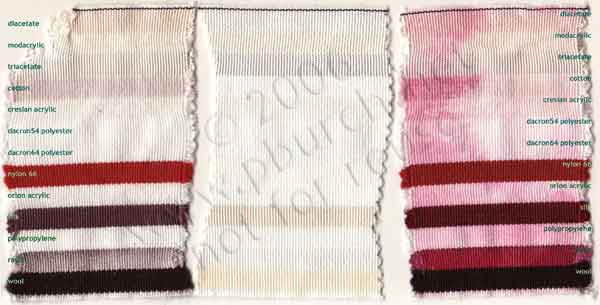
(Please help support this web site. Thank you.)
Name: Phyllis
—ADVERTISEMENTS—

 Neopaque is an opaque fabric paint, so white and light colors can cover a dark or colored background.
Neopaque is an opaque fabric paint, so white and light colors can cover a dark or colored background.
Country or region: Texas
Message: Is it necessary to pre-wash and set a wall hanging that I am simply stenciling with Dye-na-Flow? Since it is not a garment, and will not see wear and tear, can I skip this step? Thank you so much!
I wonder about treatments that may have been applied to the fabric before you purchased it. It's possible that surface treatments have been applied, with the assumption (by the manufacturers) that they will only be temporary, and yet they might contain chemicals that would tend to degrade the fabric with time.
For example, formaldehyde is commonly found on many purchased garments, and for health reasons should be washed out before the garment is worn for the first time. Formaldehyde is found in different textile treatments, including permanent press finishes and the cationic fixatives that are used to increase the washfastness of cheap dyes.
Water-soluble sizing, if thick enough, could interfere with the bonding of the paint's acrylic binder to the fabric, and might later be affected by humidity. Chances are probably fairly low that the results would be very bad, though.
Problems are less likely if you use fabric that was sold as PFD (Prepared For Dyeing), PFP (Prepared For Printing), or RTD (Ready To Dye). Although most fabric artists prefer to wash their fabrics before dyeing or painting them, and the sellers advise that it's best to prewash all fabrics, you will usually be fine if you skip washing PFD, PFP, or RTD fabrics. You can buy PFD fabrics from Dharma Trading Company, Testfabrics Inc., and Jacquard Products' SilkConnection.com.
If the fabric was sold without any of these three claims on its label (or on the end of the bolt the fabric was sold from), then it would be safer to wash the fabric before painting on it.
None of this matters much if you won't be keeping the wall hanging for a long time, say if it's for a banner for a one-time-only event. If you might want it to stay looking like new for years, then pre-washing would be safer, though it's impossible to predict how big a problem it will be if you don't prewash the fabric.
As far as heat-setting the paint afterwards is concerned, I don't think you'll have a problem with skipping that step, for a wall hanging that will never be washed. In fact, if they are allowed to dry long enough, fabric paints tend to become permanent even without heat-setting.
(Please help support this web site. Thank you.)
Thursday, May 19, 2011
Where can I find a machine for spin-drying?
Name: Carol
Country or region: USA
Message: I'm looking for info about a machine like a washing machine, but all this one does is spin. I can't come up with a name to google. I was told these cost about $130. Supposedly this saves wear and tear on my washer.
You're probably thinking about the Spin Dryer that is sold by Dharma Trading Company (among other sources).
It's made by The Laundry Alternative, Inc. They claim that using it after the washing machine will get enough additional water out of the fabric to significantly reduce drying time, and therefore energy use (if you're using a tumble dryer), and that it's easier on the clothing than the dryer.
I don't think I'd like to use it to save wear on my washing machine by stopping it before it gets to the spin cycle. Hauling unspun, sopping wet clothes out of the washer, to dry only a small portion of the load in each batch, sounds like an awful lot of work to me. It seems more useful for reducing drying time, or for spinning items that have been washed by hand.
(Please help support this web site. Thank you.)
Would it be better to use different amounts of dye for each color, in making a dye color matrix chart?
Name: Robin
Country or region: Maui, USA
Message: I recently took a class on dyeing fabric where we made a matrix of color using MX dyes. In the very first step, the instructor had us measure out the same amount of dye for each 100mls of water. We then proceeded to dye fabric using these mixtures. The result was a beautiful array of colors, but honestly, my gut tells me more care should have been taken in that very first step. My hunch is that the true nature of the dyes are not expressed in our sample books because we used a generic formula to mix them. Are you able to give me your opinion on whether or not this makes a difference here or do you want me to send you more information like amount of dye, and dye concentrate? I do appreciate your insight. I've done lots of dyeing and am used to measuring out dyes individually according to WOG regardless if I use a MX dye or a proprietary formula. Thank you, Robin
You're right. Here's what I wrote about this on my page, "How much Procion MX dye should I use?":
Different Amounts for Different Colors
Unlike the Cibacron F dyes (now sold as Novacron, or as Sabracron by ProChem), the Procion dyes are not standardized to a similar tinctoral strength per color. Even among the mostly undiluted single-hue Procion MX type dyes, some require more dye to get a similar intensity of color.
ProChem's approach is to use various amounts of dye for their color chips, online or included with their printed catalog, and specify how much dye is required to match the color they display. This gives you a general idea of whether to use more or less dye than the strength they indicate.
Dharma takes two different approaches. The first is a quick-to-use system of applying one asterisk to colors they think should be used at twice the strength (by volume) of unasterisked colors, and two asterisks to the colors that they think should be used at four times the strength. The second is a wonderfully detailed chart of dye yields, specifying OWG, ounces of dye per pound of fiber, and grams of dye per pound of fiber, for every one of the Procion MX type dyes they sell, to obtain a color intensity similar to the color chips in their catalog. Older versions of this chart included specific volume amounts, as well, but of course those measurements change with every dye lot, so they must have decided to no longer carry this added information, as it changed.
It does work to measure out the same number of grams of dye regardless of which individual dye you're using, but some of the colors will be almost pastel, while others will be much more intense. It makes sense to use more of the tinctorially weaker colors, and less of the stronger colors, so as to get a similar apparent color intensity for the starting concentration of each color.
(Please help support this web site. Thank you.)
Monday, May 16, 2011
I'm trying to find a liquid dye color mixing chart
Name: Robert
Country or region: USA
Message: I'm trying to find a liquid dye mix chart. I'm using Dharma fiber reactive dyes. They used to have a mix chart in their kits but they changed the contents of the kits. I'm using 16oz bottles for application of the dye. I know if I take 1 1/2 Cups of Yellow and added 1/2 Cup of Turquoise I get a shade of Green but the chart told me which shade lol.
A Dharma Liquid Procion Dye Chart would most likely have been for Procion H dyes, since Procion MX dyes were never made available in liquid form, as they spoil much more quickly. The Procion H liquid fiber reactive dyes had some colors that are pretty similar to some of the the Procion MX dye colors, though. Even if you're not using Procion H dyes, it's still worth looking at the Procion H chart as an aid to thinking about how to mix certain colors. Here are instructions for color mixing Procion H dyes, from Dharma Trading Company's liquid Procion H dyes page:
"The following guidelines can be used to mix color blends from the standard Liquid Procion H colors. Since color names are subject to personal perception, these mixtures are guidelines only. In order to reproduce exact colors, careful notes need to be kept on precise amounts used. We encourage you to take the time to test sample color mixtures before starting a large-scale project so you can gain a better understanding of how the colors react when mixed together. "To mix bright, clear colors, use Brilliant Yellow, Fuchsia, Turquoise and Blue Violet. To mix subdued colors, use Gold Yellow, True Red and Royal Blue. [Note: "pt" = "part". The Jacquard Procion H concentrates contained 25% or 40% dye, that is, 25 or 40 grams of dye powder per 100 ml of water, depending on color. See chart on my Procion H Dyes page for more details.]
"Pale Green: 1 pt Brilliant Yellow + 1 pt Royal Blue Chartreuse: 4 pts Brilliant Yellow + 1 pt Turquoise Bright True Green: 1 pt Brilliant Yellow + 1 pt Turquoise [Error corrected.] Dull Olive: 1 pt Deep Black + 1 pt Gold Yellow Rich Olive Green: 1 pt Gold Yellow + 1 pt Turquoise + 1 pt Brown Bronze Green: 2 pts Gold Yellow + 1 pt Royal Blue + 1 pt Brown Celadon: 1 pt Royal Blue + 1/2 pt Toning Black + 1 pt Brill. Yellow Dark Teal: 1 pt Brill. Yellow + 3 pts Royal Blue + 1 pt Toning Black "Dusty Rose: 1 pt True Red + 1/4 pt Brown + 1/4 pt Toning Black Lilac: 2 pts True Red + 1 pt Royal Blue Cranberry: 2 pts Brown + 1 pt True Red Red Violet: 4 pts Fuchsia + 1 pt Blue Violet Purple: 1 pt Fuchsia + 1 pt Blue Violet Bright Purple: 2 pts Fuchsia + 1 pt Turquoise Periwinkle: 2 pts Turquoise + 1 pt Fuchsia Grape: 1 pt Fuchsia + 2 pts Blue Violet Eggplant: 3 pts Blue Violet + 1 pt Toning Black + 2 pts Fuchsia "Ecru: 1/2 pt Gold Yellow + 1/2 pt Brown Camel: 1 pt Gold Yellow + 1 pt Brill. Yellow +1 pt Brown Pale Warm Tan: 1/ 2 pt Gold Yellow + 1 pt Brown Light Beige: 1 pt Brown + 1/2 pt Gold Yellow Warm Gold Brown: 1 pt Gold Yellow + 1 pt Brown Bright Orange: 2 pts Brill Yellow + 2 pts Gold Yellow + 1 pt True Red Amber: 5 pts Brilliant Yellow + 1 pt True Red Pumpkin: 2 pts Brilliant Yellow + 2 pts Gold yellow + 1 pt True Red + 1 pt Brown"
(The liquid Procion H Dyes are being discontinued among hand dyeing suppliers, in favor of the liquid fiber reactive Remazol dyes. Remazol dyes are sold by ProChem under the name Liquid Fiber Reactive Dyes, and by Jacquard Products retailers, including Dharma, as Vinyl Sulphon Liquid Reactive dyes.)
For other guides to mixing colors with Procion dyes, see my FAQ for the page, "How can I mix Procion MX dyes to get specific colors?", which includes links to copies of three Procion MX mixing charts (Jacquard, Dreamline, and Maiwa), as well as a description of the wonderful Dye Mixer Applet and other sources for good information on color mixing. It's very possible that what you've been looking for is the Jacquard Products Procion MX Dye Mixing Chart; although it is intended for powdered dye rather than liquid, it could equally well be used with liquid dye mixtures of standard strengths. I've improved the Jacquard chart by adding the generic names of each dye. The Jacquard chart includes colors with such names as pea green, seafoam, new aqua, blue spruce, teal, jade, yellow green, chartreuse, vermillion green, lime green, spring green, shamrock, fern green, sage, fatigue green, avocado, and artichoke.
There are no color chips shown in the Jacquard or Maiwa mixing charts, unlike the Dreamline charts; the names of the colors are the only specification of exact hue expected. There are several clever online tools for determining the different hues that may be indicated by a specific color name, or the general color family to which a subtle shade belongs. Further information on some of these may be found in a discussion starting with my 2009 Dye Forum Community of Dyers post entitled "color name toy".
Specific color mixing charts for another type of cool water fiber reactive dye which is very similar to Procion MX dye, the Cibacron F or Novacron F dyes, which are sold by ProChem as Sabracron dyes, can be found in Deb Menz's book, Color in Spinning . .
(Please help support this web site. Thank you.)
Sunday, May 15, 2011
How can you prevent color damage during the process of boiling wax out of batik?
Name: Dobrusia
Country or region: Poland
Message: Hello,
How to prevent the colors damage during the process of boiling wax out of the batik? Usually they are not supposed to be washed in high temperature (even after using fixative)... I'll be grateful for advice.
When the colors wash out during the wax removal step in batik, it's most commonly caused by not using the best type of dye.
The best type of dye to use for batik on cotton is a cool-water fiber reactive dye. (See About Fiber Reactive Dyes.) After the unattached excess dye has been washed out, the dye that has properly bonded to the fiber will withstand even extensive boiling without weakening in color. This is because fiber reactive dye forms an extremely strong permanent bond to the fiber. Good fiber reactive dyes include Procion, Remazol, and some (but not all) Dylon dyes.
Some people use a type of dye called direct dye for batik, but direct dye requires hot water to set the dye, which melts the wax. (See About Direct Dyes.) It is possible to use direct dye with cooler water, but cooler water results in less wash-resistant colors, which are more likely to run badly when wet. Even when a direct dye is properly set by boiling the fabric with the dye for an extended period of time, the color will tend to run to some extent whenever it is washed, because direct dyes do not form a strong chemical bond to the fiber. Direct dye that has been used to dye clothing in solid colors can be made more wash-resistant by applying a cationic dye fixative, such as Retayne, but I don't know any way to use this product for batik without causing permanent staining. (See Commercial Dye Fixatives.)
Steam-setting helps make direct dyes more permanent, though they can never be as wash-proof as fiber reactive dyes. Unlike boiling, steaming can be done without ruining the batiked design, and it can be a good way to remove wax. After allowing the dye to dry, you must wrap it in many layers of paper. The ink from fresh newspaper will stain the fabric, but unprinted newsprint paper, or newspapers that have been kept for six months since the time they were printed, can be used against the fabric without causing ink stains. The paper will absorb the wax as it melts, and prevent the dye from one part of the fabric from contacting another part, while still allowing the moisture of the steam to penetrate the fabric to set the dye. Steaming can be used to set certain dyes on cotton as well as on silk. For information about how to steam your fabric, see the section entitled "How to Fix Your Silk Dye", two-thirds of the way down my page, How to Dye Silk.
It is better to use a good fiber reactive dye for your batik than it is to use direct dye, even if you can steam the fabric. If you cannot find a local source for good fiber reactive dyes, you can buy it online by mail-order. See my page, "Sources for Dyeing Supplies Around the World". Scroll down to the section of European suppliers. I don't have a listing for a dye supplier in Poland, but you might be able to find one by contacting the local office for a large dye manufacturer, such as Dystar or for Huntsman Textile Effects, and asking for the names of local suppliers to whom they sell dye.
Even when using a good fiber reactive dye, a few people experience problems with pale dye colors. This can be caused by failing to use sodium carbonate (also known as soda ash or washing soda), which chemically sets fiber reactive dye on cotton, or by using a polyester-blend fabric instead of 100% cotton, or through other errors. For more suggestions, see the FAQ at my web site, including the answer to the question, My colors are not very bright. What did I do wrong?.
(Please help support this web site. Thank you.)
Sunday, May 08, 2011
I can get a dye made from grape skins. Will it work on cotton?
Name: Steve
Country or region: USA
Message: I can get a dye made from grape skins used in food industry. Will this dye work on cotton? If not, how could I use this color/dye in some quantity with another permanent dye so i can advertise it is a wine dye?
No, the anthocyanins that make up the natural coloring in grape skins cannot be used as an effective dye for cotton. Not only will it fade quickly, but, until it fades, it will be brown in color, not the beautiful purple that the phrase "grape dye" implies. Grape-dyed cotton cannot be laundered without destroying the purple color.
Using grape skin pigments as a "wine colored dye" on cotton fabric would be misleading. I can't advise anyone to lie to their customers in this way. The proper purpose for this coloring agent is as a food coloring.
Good input. As you know Crazy Shirts and a few others do advertise shirts dyed with wine. Technical distinction "with" is the key. - Steve
Name: Liz
Country or region: USA
Message: How do you tie a big blanket? It's raining outside. I usually do it outside. Can you do it in a machine? I need suggestions....
If the blanket will fit into the washing machine, you can dye it in there, but not if you've tied it, as for tie-dyeing. Washing machine dyeing is best for fabric that weighs 8 pounds or less, total, but only when you are dyeing it a single solid color.
What I've done with a large 100% cotton bedspread, when I did not want a solid color, was shape it in exactly the same way as you would tie a t-shirt for the swirl pattern. I spread it out on the living room floor to swirl it around and bundle it together into the desired shape. Then I placed it inside a large plastic storage bin, one that had no holes of any sort in the bottom. I poured dye over it, in the same pie-piece-sized sections of color as we usually do for a spiral, but according to the low water immersion dyeing recipe: that is, I mixed up the dye the same as for tie-dyeing, but I applied the soda ash after the dye, rather than before. I made sure to wet the entire spread with dye and then with the soda ash mixture that I poured over. I put the lid on the plastic bin afterwards to prevent any messy accidents.
After leaving the spread with the wet dye and soda ash on it overnight in a warm place (no colder than 70°F), I then washed it out in the washing machine, first using cool water to remove the soda ash and some of the excess dye, and then twice in very hot water to remove the remaining unattached excess dye. Here's a picture (with my cat blocking much of the design):
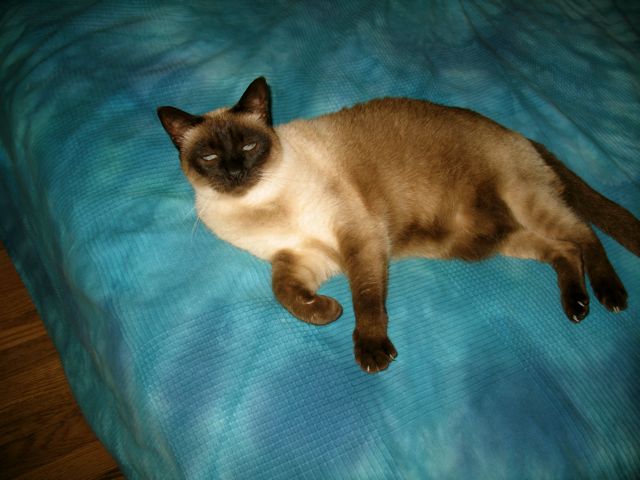
A large bedspread will require a lot of dye. A blanket that weighs five pounds will require as much dye as ten size extra-large adult t-shirts. Weigh your blanket, dry, before you start dyeing, to get an idea how much dye you'll need to use, and check my page, "How much Procion MX type dye should I use?".
I hope that you know the fiber content of your blanket, because it's very important to choose the right kind of dye for your fiber. It makes a big difference to use the right type of dye. Since my spread was made of cotton, I used Procion fiber reactive dye, which is the type of dye found in good tie-dyeing kits. It's usually best to avoid any sort of all-purpose dye, such as Rit, because it will fade quickly when washed, but there are some fiber combinations for which it's the best choice. If you have more questions about the type of dye to use, see my web site, or send another query.
(Please help support this web site. Thank you.)
Saturday, May 07, 2011
What color dye can I use to get stained bright yellow cotton capri pants a dark navy or black?
Name: Cherry
—ADVERTISEMENTS—

Country or region: USA
Message: I have a bright yellow cotton carpi pants that are stained. What color dye can I use to get them a dark navy or black? Thanks, Cherry
Changing a light color to a dark color generally works well, and a very dark color is more likely to cover stains than a lighter one. You should have no difficulty in turning yellow to black. However, applying dark blue dye to a bright yellow may result in a dark green, rather than a navy, depending on the color intensity of the yellow.
You will need to choose a good dye, and to use enough of it that you get a dark black instead of gray. I strongly recommend against an all-purpose dye, such as Rit dye, since all-purpose dyes give relatively poor results. A fiber reactive dye, such as Procion MX dye or Dylon Permanent dye, will work better and stay dark far longer.
Go to a local sewing store or crafts store and look for Dylon Permanent dye. First weigh your capri pants, while they are dry, so that you know how much dye you will need; purchase two packets for every pound of fabric. If your local shops do not carry this dye, you can buy it or Procion MX dye online. Dyeing anything black takes a lot more dye powder than any other color; I recommend as much as 45 grams of black Procion MX dye for every pound of fabric, plus soda ash or washing soda, and salt.
(Please help support this web site. Thank you.)
Friday, May 06, 2011
How do I do a test swatch before I commit to dyeing 7 yards of fabric?
Name: Julie
Country or region: Canada
Message: How do I do a test swatch before I commit to dyeing 7 yards of fabric? I'm planning to cut a 8" x 8" swatch to test the color out. Do I use 1/2 tsp per 1 cup of water? Might be using Dharma Procion dye. New dyer.
You'll need to weigh both your fabric and your dye. Take the same fraction of everything: for example, if your 7 yards of fabric weigh a total of 1400 grams (that's three pounds), then you could try dyeing a test swatch that weighs 14 grams; since that's 1/100th of the total, you would also use 1/100th as much dye, 1/100th as much water, and 1/100th as much of any auxiliary chemicals. Of course it doesn't have to be exactly 1/100th, as long as you scale everything down by the same factor, but 1/100th makes for some easy math.
Be sure that the water is the same temperature for your test as it will be in your full-scale dyeing, and that the amount of time for each step in your dyeing recipe is the same.
If you would normally dye your large amount of fabric in a twenty-gallon top-loading washing machine, you can do your 1/100th scale test in 0.75 liters of water, in a one-quart container, stirring frequently with a glass, plastic, or stainless steel spoon.
For a tiny amount of dye, it may be difficult to weigh out a sufficiently small amount. If your scale will only weigh in increments of 0.5 g, for example, you don't want to weigh out a quantity smaller than ten times that amount, for the sake of precision. Unfortunately, scales that are precise to much smaller increments are more expensive. The answer is to make up stock solutions to work with, as described for acid dyes in this earlier post: "How can I measure the right amount of acid dye to use for a particular color?".
It's not impossible to scale up or down while measuring dyes and chemicals by volume, rather than weight, but, since different dye lots are standardized by weight, rather than volume, the results you get now will not be usable for a different jar of dye a few years from now. Also, the math is much more difficult if you use measuring spoons with common measurements, rather than a gram scale plus graduated cylinders and pipettes with the metric system.
In the US, if measuring spoons and cups are very accurate, then one teaspoon equals 5 milliliters (ml), one tablespoon equals 15 ml, and one cup equals 16 tablespoons, or 240 ml. Sources vary over the equivalence for Canadian measuring spoons. I've seen one chart that indicated that a tablespoon in Canada is 14 ml, and a teaspoon 4.7 ml, but in another chart, a teaspoon was listed as 5 ml while a tablespoon was listed as containing 20 ml, and one cup, 250 ml. You'd better check this, in any case, because kitchen measuring spoons are notorious for inaccuracy. Check your own measuring spoons if you're using them, to see whether three teaspoons is indeed equal to one tablespoon, or one cup to sixteen tablespoons.
You will need an accurate kitchen scale to weigh your test fabric to make sure that it is the right size, as converting between weights and yardages is impractical without one.
(Please help support this web site. Thank you.)
Thursday, May 05, 2011
I am wondering about the pot one would use to do the dyeing in. Is there a particular type of metal pot that should/should not be used?
Name: Cher
Country or region: USA
Message: Hello, I read your information about dyeing polyester satin material. I am wondering about the pot one would use to do the dyeing in. Is there a particular type of metal pot that should/should not be used? Also, any/all other information regarding THIS area of the dyeing process would prove to be most helpful! Thanks in advance!
The best materials for a dyeing pot are either stainless steel or enameled steel.
Enameled steel canning pots are inexpensive for their size; you can find a new 20-liter (5 gallon) canning pot for under twenty dollars, or a 33-quart (8 gallon) canner for under fifty. The only drawback is that the lining of cheap enamel pots will chip easily. Once you get a chip on the inside of an enameled steel pot, the reactive steel underneath will rust, which can dramatically affect the colors produced by many dyes. However, you can repair the chip by painting over it with a heat-resistant enamel paint (don't use the pot for several days after the paint has dried). This is not safe to do with a cooking pot, since the paint is not food-safe, but it's okay for a dyeing pot.
My personal preference for a dyeing pot is stainless steel. It will not react with acids or bases, and it will not release metal ions in concentrations high enough to alter the color of a dye. You never have to worry about small chips or scratches. My own dyeing pot was relatively cheap, without an aluminum layer under the stainless steel, so it's thin enough that I would not like to use it for cooking food; soup would tend to stick on the bottom. I haven't found this to be a problem for dyeing, though. Even a cheap stainless steel cooking pot is usually more expensive than an enamel pot, especially in the largest sizes, so an enamel pot may bepreferable unless you will be using it repeatedly. A good source for 5-gallon and 10-gallon stainless steel pots is a beer-brewing supply store, such as Defalcos.com, which as of this writing sells a lightweight 5-gallon stainless steel brewing kettle for $35.
You'll need to make sure that your dyeing pot is large enough for whatever you're dyeing to move around in freely. If the pot is too small, the fabric will not move freely in the dye, and you will get uneven results. (This effect can be exploited for multi-color designs in low water immersion dyeing, which does not require nearly as large a pot.) To dye one pound of fabric (weighed while dry) to a solid color, you'll need a pot that is three gallons in size, or larger.
The general rule is that you don't want to use a metal that will react with either your dyes or the auxiliary chemicals you use with them. Aluminum is out, because you cannot use it with either acids or bases. Most dyeing recipes call for an acid such as vinegar, or a base such as soda ash (though never both together, since one will neutralize the other). Aluminum is also used as a mordant for natural dyes, and may affect the colors produced by some dyes. Cast iron is good only for dyeing black and especially dull colors, because the iron ions interact with many dye molecules, including both natural and synthetic dyes, in a way that makes the colors much darker and duller. Old dyeing manuals say that iron "saddens" the color of the dye. Copper and tin have very different effects on the colors of dye, changing the colors of some dyes unexpectedly, but copper pots are too expensive to consider for use in a dyeing pot, anyway.
Choosing a pot for dyeing polyester in can be a little easier than for natural fibers. Although I would try to avoid using aluminum even for dyeing polyester, Jacquard Products, the makers of iDye Poly, say that you can use an aluminum pot with their polyester dye. However, the recipe that PRO Chemical & Dye recommends for disperse dye calls for pre-scouring the fabric with soda ash before dyeing, and using a little citric acid or vinegar in the dyebath itself; neither of these is a good idea in an aluminum pot. Better to stick to stainless steel or enamel pots, which have the advantage of also being useable when you want to use a different type of dye.
As you probably already know, it's not considered to be a good idea to reuse a dyeing pot for preparing food, since no textile dyes have been tested for safety for use in food, and there's always the fear that a little contamination will remain in the pot, though the risk is low for a unscratched stainless steel pot. While most of the dyes used by hand dyers are low in toxicity, not all of them are, and it makes sense to be reasonably careful.
Other useful tips on dyeing polyester satin? The most important one is to use disperse dye only, since other types of dyes will not work on polyester.
As you already know, high heat is required, so polyester cannot be dyed in the washing machine or in an unheated bucket.
Another issue in dyeing polyester is that you'll also need to use a dye carrier chemical to get deep or intense colors. It's not needed for medium or pastel colors. This chemical is sold separately by PRO Chemical & Dye under the name Dye Carrier NSC, while it is included as a small plastic pouch in the packet of Jacquard Products' iDye Poly. The smell of the carrier chemical can be pretty bad. In the future, I'd prefer to use an outdoor burner to heat my polyester dyebath, rather than put up with the awful smell in my house. Even with every door and window in the house open, and a big fan in the window helping to suck out the air, I found the odor to be oppressive. I believe that it is not unsafe to use, however, even though it smells bad, as long as you have good ventilation. These same dyes are good for other synthetic fibers, as well, including acrylic and acetate; the dye carrier chemical is not needed for the other fibers, only for polyester.
Don't neglect the fact that disperse dye also works very well when applied as an iron-on, so if you have any interest in effects other than a smooth solid color, look into transfer printing. No carrier chemical is required. There's a simple example on my site, "Iron-on Fabric Crayons for Synthetic Fibers". For more information on disperse dyes and different ways to use them, see my page "Dyeing Polyester with Disperse Dyes".
(Please help support this web site. Thank you.)
Wednesday, May 04, 2011
Why did my dye smell like almonds or marzipan?
Name: Ann
Country or region: Canada
Message: No big crisis or anything but I was making up some ProChem turquoise dye and it smells like almonds or marzipan. I just wondered if you knew why.
It's an interesting question. I've never noticed this particular odor with Procion Turquoise MX-G, but I did notice it when opening a jar containing Procion Blue MX-7RX, which I ordered a few years ago from Germany. Another jar of the same dye that I ordered from a different company lacked the almond odor. Normally the only odor I notice with the Procion dyes, trying, as we all do, not to breathe any at all, is a chlorine smell that I associate with the chlorine atom on the reactive part of the dye molecule. (The chlorine atoms in Procion MX dyes are so important to the dye reaction that they're mentioned in the name for this entire class of dyes, the dichlorotriazines.)
There are surprisingly many chemicals that smell like almonds, although their structures can be quite different from one another. Almond-scented chemicals include deadly hydrogen cyanide as well as nitrobenzene, benzaldehyde, benzonitrile, and trans-2-hexenal. Look at how different their chemical structures are from one another (keeping in mind that there is a carbon atom wherever two lines meet at an angle, and most hydrogen atoms are not shown at all):
Trans-2-hexenal:

Benzonitrile:

Benzaldehyde:

As reported in Wikipedia, "Benzaldehyde is used chiefly as a precursor to other organic compounds, ranging from pharmaceuticals to plastic additives. The aniline dye malachite green is prepared from benzaldehyde and dimethylaniline. It is a precursor to certain acridine dyes as well." It is a common food additive, and is naturally responsible for the almond flavor of foods such as marzipan.
Hydrogen cyanide:
 Hydrogen cyanide is a deadly poison, too toxic to have been the source of the odor you noticed, especially since its almond odor is described as being faint. Coincidentally, as reported in Wikipedia, hydrogen cyanide was first isolated from a blue dye, Prussian blue, which is hydrated ferric ferrocyanide. (We can be sure that there's no Prussian blue in our Procion dyes.) In another coincidence, cyanuric chloride, which is prepared from hydrogen cyanide, is the chemical precursor for the reactive section of Procion MX dye molecules, but its odor is described as pungent, not resembling almonds.
Nitrobenzene:

As described in Wikipedia, nitrobenzene is occasionally used in the laboratory as a solvent, especially for electrophilic reagents.
This last one is of particular interest to this question. Nitrobenzene is listed in Wikipedia as a "related compound" to Benzenediazonium chloride—a key intermediate in the synthesis of azo dyes, including the colored section of the Procion dye molecule. Here's the structure of benzenediazonium chloride:

Numerous chemical producer web sites describe nitrobenzene as a dye intermediate.
I don't know for sure whether the almond odor you observed is due to the presence of a small amount of contamination with nitrobenzene, but it seems to me to be the most likely alternative. Benzaldehyde is also possible, but seems less likely to be a contaminant in the copper phthalocyanine dye in which you observed the odor.
Nitrobenzene was once used as a food additive, for the purpose of providing almond flavor, but it is now considered to be far too toxic for that use. Excessive exposure can cause a serious medical condition, methemoglobinemia. According to an MSDS provided by JT Baker, the lethal dose, if nitrobenzene is swallowed, is one to five grams (between less than a quarter teaspoon and less than one teaspoon of pure liquid nitrobenzene). I doubt that the exposure involved in occasionally catching a slight whiff of it is significant, but someone who works all day at measuring out dyes would need to take safety precautions against breathing all possible contaminants, especially including good ventilation.
(Please help support this web site. Thank you.)
Tuesday, May 03, 2011
How can I dye a dry-clean-only silk skirt?
Name: Judy
—ADVERTISEMENTS—
Lanaset Dyes
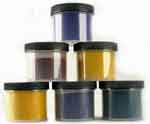
Lanaset Dyes are among the very best dyes for hand-dyeing wool, silk, angora, mohair, and most nylons. You will also need: citric acid, sodium acetate, Glauber salt, Albegal SET, and Synthrapol.
Buy from
Paradise Fibers

Color in Spinning
by Deb Menz
Mixing your own colors
with Lanaset dyes
Country or region: United States
Message: I have read your website, but I am feeling nervous about dyeing silk. Just wanted to make sure I use the correct method and product. Just purchased a couture Herve skirt with a long train (probably the equivalent of 4 yard of fabric) The tag only states 100% silk. The fabric is slightly see through but it isn't as sheer as silk chiffon. Currently it is dark grey and I want to dye it black. The label also states dry clean only. I don't mind having it dry cleaned. I need to know which process would be best. My dry cleaner had mentioned that silk may spot if wet with water. I have also experienced hand washing a silk item caused it to become slinky (lost body). I want to keep the body of the fabric the same and have very even color.
There's no way to get around this fact: if you can't wash it, you can't dye it! You must prewash the silk before you dye it, to remove invisible stains and finishes that will prevent good dyeing, and you will have to wash it a lot after you dye it, too, in order to remove the unattached excess dye. There is no hand dyeing process that will make washing unnecessary.
Silk is a very old fiber; the solvent-based dry cleaning system is much newer. Silk itself can tolerate water washing very well, and immersing silk all over is a good way to remove water spots. However, as you've seen before, some silk fabrics are treated with water-soluble finishing products, so that, after washing, the body and feel of the silk are different. If you're not willing to risk the body of your silk skirt, you should not even try washing it.
Even if you can wash it successfully, there is always some risk when you dye a commercial garment. Sometimes the different parts of the garment have come from different bolts of fabric, which match before you overdye them, but end up different shades after you overdye them. There's no way to predict whether or not this will happen. It's also possible that a blotch of some fabric finish, which is currently invisible, will, even after prewashing, prevent the dye from reaching the fabric evenly, resulting in a random splotch of lighter color.
Another problem with overdyeing a formal garment is that the stitching that holds the skirt together at the seams is almost invariably made from polyester, which will not take dye and will remain the original color; the contrast of the old thread color against the new fabric color may not give the look you want.
As a result, I can never recommend that anyone dye an expensive garment, even if it is washable, unless it is useless in its undyed state. There is always a real risk that you will not like the results. It's better to dye something that you won't mind losing if things don't work out. For hand-dyeing very expensive clothing, it is best to start by dyeing the unsewn yardage, and only then, after succeeding in dyeing it, arrange to have it professionally sewn into the garment you want.
If none of this dissuades you, then, after prewashing thoroughly in hot water, you should dye the silk using acid dye, in an enormous non-aluminum cooking pot that is large enough to permit the skirt to move freely. The auxiliary chemicals used with acid dyes produce less of a change in the hand of the fabric than the high-pH auxiliaries used for most reactive dyes, and a high volume of water and constant stirring help to produce a smooth solid color. The most satisfactory black silk dye for use in hand dyeing is Lanaset Jet Black, available by mail-order from dye suppliers including PRO Chemical & Dye, Earth Guild, and Paradise Fibers. Special auxiliary chemicals, such as Albegal SET, are also required, to make the color more level and solid. Follow your dye supplier's instructions very closely. Good luck.
(Please help support this web site. Thank you.)
Monday, May 02, 2011
Do you know how to fix watercolor crayon on fabric?
Name: Kathryn
Country or region: US
Message: Do you know how to fix watercolor crayon on fabric? Mordant? I do not want to use spray fixative on fabric to be used in a quilt that will be washed. Thank you in advance.
The best way to fix watercolor crayon on fabric is to protect it by framing it behind glass. Only keeping moisture away from the design altogether will permit the color to persist in the fabric long-term.
There is no way to permanently fix watercolor crayon on fabric like a real dye, so that it can be safely washed, without losing or at least blurring the design. Mordants will do nothing at all to help. Watercolor crayons are designed to dissolve in water instantly, turning the original crayoned design into something that looks more like brushed-on watercolor paints.
There is one way to make the color from the watercolor crayons last longer on fabric after it is washed, but it will not preserve the design. If you obtain a colorless clear acrylic fabric paint, such as Jacquard's Neopaque Colorless Extender, you can paint it heavily over both sides of the fabric. This will become permanent after it is allowed to dry and then heat-set with a hot iron or in a commercial dryer, as per the manufacturer's instructions. Unfortunately, since the watercolor crayon is (obviously) water soluble, painting on it with a water-based clear acrylic will change the design significantly; the color will run as the colorless fabric paint comes into contact with it. It will not preserve the design in its original dry form.
A better way to make a quilt with your watercolor crayon design exactly as it now exists would be to copy it photographically. What you will need to do is have the design photocopied onto an iron-on image transfer (you can pay to have this done at a copy shop), or scan it into your computer yourself and use it to print onto permanent inkjet iron-on paper. You can then transfer the design to fabric with a hot iron, or get a t-shirt print shop to do the job more professionally using their larger and hotter heat transfer press. You can also buy fabric that can be printed directly with your inkjet printer. Designs prepared in this way, like designs made with fabric paint, sit on the surface of the fabric, instead of soaking in like a true dye, so heavy use and repeated laundering will eventually result in wear to the design. They will work fine for quilts that will be washed only occasionally and with appropriate care.
To make permanent designs on fabrics to be used in quilts, be careful to start with materials that can be made permanent and washproof. There are many different alternatives, including Pentel fabric crayons for natural fibers, Crayola fabric transfer crayons for fabrics that contain at least 50% synthetic fibers (polyester or nylon), permanent fabric markers, Shiva Paintstiks, watercolor-effect fabric paints such as Dye-Na-Flow and SetaSilk, thicker fabric paints such as Jacquard Textile Colors, and of course true dyes, such as the fiber reactive dyes that are the best choice for cotton quilts, including Procion MX and Remazol dyes. Lower quality true dyes that run in the wash can often be made adequately color-safe by using a commercial dye fixative such as Retayne; these dye fixatives work well on Rit all-purpose dye, and on many commercially dyed fabrics, but cannot be used to make the pigments in watercolor crayons more permanent.
(Please help support this web site. Thank you.)
Sunday, May 01, 2011
Can I use a PH Increase product as an alternative for soda ash?
Name: Fredric
Country or region: Canada
Message: Hi, can I use a PH Increase product as an alternative for soda ash? I have two sweatshirts that I wanna dye black. One is black and the other grey. Thanks
If your "pH Increase" product contains at least 97% sodium carbonate, then it is perfect for use in dyeing with fiber reactive dyes, such as Procion MX dyes. See What is soda ash, and what's it for in dyeing? for more information. Check the label carefully, as some pool pH increasers contain sodium bicarbonate, instead, which won't work at all well.
What kind of dye are you using? Soda ash is useless with all-purpose dyes such as Rit; Rit dye cannot be made more fade-resistant with soda ash, and is markedly inferior to reactive dyes, since it stays dark on your clothing for only a few washings. Soda ash is also unnecessary with most Dylon dyes, since they already contain a pH increaser ("Dylon Cold Dye" is an exception that does require added sodium carbonate).
Keep in mind that dyeing black normally takes two to four times as much dye powder as any other color. Weigh your garments, dry; you may need up to 10% of the dry weight of the fabric, in reactive dye powder, to get the darkest black, though not as much is required for freshening up a garment that is already black. Only 100% dyeable fabrics, such as a 100% cotton that is not stain-resistant, will acquire a truly dark black. Find a good recipe for the dye you are using, and follow it closely. The easiest way to dye anything a perfectly smooth solid color is in the washing machine; see "How can I dye clothing or fabric in the washing machine?". To save on dye and other materials, you can use a 5-gallon bucket and follow the same recipe, scaled down, except for continually stirring it yourself by hand.
(Please help support this web site. Thank you.)
|
|

